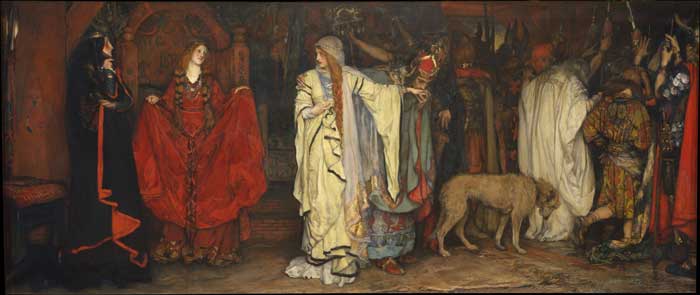
Edwin Austin Abbey, “King Lear,” Act I, Scene I, 1898. Metropolitan Museum of Art. 54.25 x 127.25 in.
Poetry, said T.S. Eliot, enlarges our sensibilities to a degree greater than painting or sculpture. The reason lies in the power of words to raise our hidden feelings to the conscious level. Eliot concluded that a poet’s first duty must be to language.
Poet James Ragan came to appreciate the power of language at an early age. His family had emigrated from Czechoslovakia to settle in the Pittsburgh neighborhood of Duquesne, a steel town bordering the Monongahela River. Unable to take up his previous occupation of farming, Ragan’s father found more lucrative work tending the blast furnace of a nearby steel plant so massive the locals referred to it as Big Bertha.

James Ragan
If abandoning the old country meant leaving behind a way of life, the immigrant family brought to the new world an important companion: their native Slovak. Indeed, it was the only language they spoke. That social restriction posed little problems at school where the young Ragan studied with Slovak nuns who were themselves enthusiastic practitioners of their native tongue. But things were different when it came to getting along with children in the neighborhood.
“I wanted to be loved like any other kid, but the boys were always picking fights with me,” says Ragan. “At first I couldn’t understand why, but after a while I started to realize it had to do with language. They were prejudiced against me because of this strange Slovak I was speaking.”
Good communication became a matter of survival. The young boy did the best he could to pick up stray English words. As the penultimate entry in an array of 13 siblings, he enlisted his older brothers and sisters as default sources of education despite their own meager fluency in the language of their new land. It was only when Ragan began taking formal courses in English in the fourth grade that a door suddenly opened. “I began to love the English language,” he says. “I found it exciting to learn new words. And when I started to speak the language of the other boys in the neighborhood, I noticed our fights became less frequent. I learned that I could win arguments with words rather than fists.”
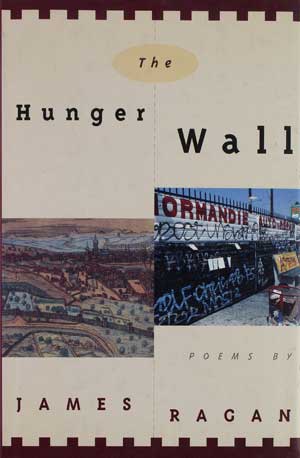
James Ragan, The Hunger Wall, Grove Atlantic, 1995
Language, it seemed, had the power to change people. Despite the boy’s interest in athletics, and much to the surprise of his relatives, his newfound love of language compelled him to take up poetry. “The more I learned English words, the more I sang them in my mind,” he says. “And then I discovered I loved to put them on the page.” The shift from prose to verse was not without influences. First was the cache of books by Czech and Slovak authors, carted over from the old country by literature-loving parents. And second was the material inside those books: “Slovak is a very lyrical sounding, rhythmic language,” he says. “When I started writing in English, that quality began to come through.” Too, a High School foray into oil painting, for which Ragan won an award, fostered an appreciation for pictorial image that transformed into poetic metaphor. The move to poetry, though, meant employing words in a new way. Ragan had engaged with his boyhood peers by utilizing language as a channel of communication, as an invitation to compromise and understanding. Poetry would demand readers participate consciously with language as a tool of construction. That can be a lot to ask of people unwilling to extend the requisite effort. The youngsters whom Ragan talked out of fighting, for example, would likely reject any well-intentioned offer of a slim volume of verse.
To win the hearts and minds of his public, Ragan began reciting his work for live audiences. He took care to connect with their emotions, describing his technique in these words: “I follow something Eliot said: ‘You must never remember a poem. You must relive it.’ That’s what I try to do. I want to feel the experience totally so that I am reciting the work and not just reading it at the audience. Sometimes when I recite my poems about my father and mother my eyes will even close because I’m so deep into it.”
Does Ragan’s description of his recitative mindset recall the living presence of a stage actor? The similarity is not accidental. Eliot, after all, declared that poetry is most happily married with the theater, an art form which could, in his words, “cut across all the present stratifications of public taste” and thus fulfill what Eliot believed to be poetry’s vital social function of influencing the public’s speech and sensibility. Poetry can best do this if it is played upon a theatric instrument that charms the public ear. Indeed, one might argue that poetry lost its hold on the popular imagination when verse disconnected from the narrative impulse that enlivens the stage. As Eliot pointed out over a half century ago, modern day readers look to prose fiction for stories, having long ago abandoned the verse romances of Byron and Scott. By seasoning a mix of lyric and story with recitation the poet can create a theater that reconnects his art with the public. It wasn’t long before Ragan extended his recitation into stage drama. “Through my plays The Landlord and Commedia I wanted to explore the expansive and expressive nature of drama,” says Ragan, reflecting on the poetic elements of the works. “I could see that something about it engaged audiences personally.”
Especially fortuitous for the modern audience, drama’s marriage with poetry has historic precedent. If Shakespeare’s iambic pentameters come at once to mind, Ragan reminds us that poetry was a vital element in the earliest days of Western stagecraft. “For the Greek tragedians, the chorus itself was the poetry of the play,” he says. “Their whole dialogue used poetry. And Aristotle titled his book about drama Poetics.” More recently, verse plays had been a favorite medium for Auden, Eliot, and Yeats–three poets Ragan admires. An argument can be made that these poets exhausted the potential for the verse play, and whether that is true or not, the fact remains that today’s theater audience will rebel against any language too divorced from the common tongue. For Ragan, the point is not that a play should be written in blank or free verse, but that it should contain poetic rhythm and metaphor to the degree requisite for the creation of a theatric experience that captures the popular imagination.
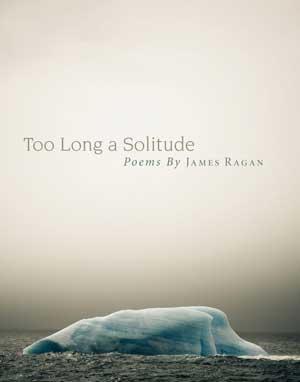
James Ragan, Too Long a Solitude, University of Oklahoma Press, 2009.
From theater it is a natural step to another public instrument. Film attracts an audience still greater than the stage while providing the same elements of subplots, dialog, actions and characterization which are difficult or impossible to express in lyric. Ragan has also ventured successfully into this form, most recently completing work as a screenwriter for The Rising, a film about the Irish Easter rebellion of 1916. As the stage so the screen, where Ragan again draws sustenance from poetic roots. “I try to use descriptive metaphors as often as I can to drive the story forward and to help the audience understand the characters,” he says.
Conversely, elements of story and plot can inhabit poetry. “Critics often say there’s drama in much of my work,” says Ragan. “In my poem ‘Tent People of Beverly Hills,’ for example, I have employed story and drama throughout to give a visually personal view of what it’s like to be homeless.” Reading that poem at the First International Poetry Festival in 1985 in Moscow, Ragan experienced at first hand the power of the drama and verse amalgam. Bob Dylan, another of the four western poets invited to read, requested and received the original copy of the poem, which he retains it to this day.
As these comments suggest, to a considerable extent a writer can merge the different formal components art brings to the table. “Film is a visual medium, drama is a talking medium, and poetry is both,” says Ragan. “They’re all married, as far as I’m concerned. And I’m going to exploit language in everything I write.” Creating this orchestral mix of the prosaic and poetic engineers a push-pull between language as inviter and demander discussed earlier in this essay. A dialogue of familiar characters pulls the audience into the art, while rhythm and metaphor enlarge the audience’s sensibility by pushing language into new territory. Little wonder the term “poetics” since Aristotle’s day has come to refer to the study of the creative principles informing cultural constructions beyond verse. The elements of poetry will conspire with any art form that aspires, to recall Walter Pater, to the condition of music.
The painting at the top of this essay illustrates to a significant extent this aesthetic amalgamation. Edwin Austin Abbey’s realization of Shakespeare’s King Lear dramatizes the marriage of painting with thespian recitation, poetry, theater, and even costume design. It also suggests a potential conflict: The poet who plays on public instruments must make peace with other creative talents, be they actors, directors, or cinematographers, all of whom work with competing constructive materials such as the human body and light.
Absent a shared sensitivity, artists risk conflicts that disrupt collaborative work and alienate the audience. When composer John Cage began to create projects with choreographer Merce Cunningham, he sensed a pending battle between music and dance. “I noticed that the modern dancers wanted the dance to be finished first and the music written to fit,” Cage recalled. “Formerly the ballet had taken a piece of music which had already been finished, and made the dance fit the music. Neither situation struck me as being politically good. I wanted a situation where both the choreographer and the composer worked, so to speak, simultaneously, and worked together without one being ahead of the other or interpreting the other.”
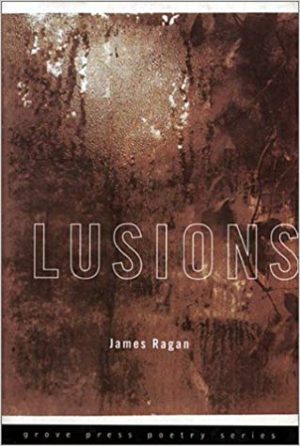
James Ragan, Lusions, Grove Atlantic Press, 1997
To maintain their creative independence, Cage and Cunningham decided to work in formal silos. While both artists were creating one work of art, neither would know what the other was doing until an actual performance combined the results. If this arrangement avoided the corruption of rival aesthetics, it also posed a question: What medium could serve as the common ground for the two creative channels? “John and I decided that the two arts existed in time, and we could use time as the [shared] structure,” said Cunningham. Each channel was to be composed of a set series of segments, each timed to the second. “We didn’t have to use that amount of time in the same way. John might cut it up with sound in a different way that I might do with dance.”
The two artists felt confident the channels would combine successfully in performance but acknowledged the work would demand a lot from the audience. Would people engage successfully with the two channels in combination, or would one be privileged over the other? “We present a dance and a music which goes along at the same time,” said Cunningham. “But the individual spectator makes a kind of choice — that is, whether he puts them together or keeps them separate. I’m quite sure it is still curious for many people because they come to a dance with a certain frame of mind. Then if it doesn’t fit the way they think it should be, they don’t know quite how to deal with it.”
Most people will probably see the Cage and Cunningham experiment as an outlier, given the inclination of collaborative artists to accept a degree of formal accommodation. When cellist Yo-Yo Ma asked choreographer Mark Morris to create a dance to a performance of Bach’s Third Suite for Solo Cello, for example, the two artists worked closely together rather than in separate silos. “The hope that I had was that we would take the essence of what is in the music and make something wonderful that refers back to the music,” said Ma. While Morris was willing to entertain Ma’s proposal, he expressed reservations, worrying that his work would “obfuscate the music through dancing” and result in a “horrible crime” against aesthetics. “It’s always dangerous to subject a piece of music, especially something that is a great piece of the musical literature, to the opinion of a choreographer which is a completely different thing from the opinion of a musician or of a vocalist,” he said. “It’s easy to feel that I am committing a crime against music. It’s a simple thing of ‘here is a fabulous piece of music. Isn’t that enough?’”
Ma defended his initiative by maintaining that accommodation in the arts is common and non-destructive. “We could belittle and say ‘okay this music is so great I shouldn’t even play it, because I can’t possibly make this [performance] as great as this music is,’” he said, speaking of a cellist’s efforts. “We can say the same thing about you, and say ‘the music is complete in itself. Why do you want to tamper with it [by dancing to it]?’” Finally, Ma defended his project by appealing to the robust nature of the piece under discussion: “I think that what this music is attempting to describe is something that can take all of the imagination of lots of people put together, and still it’s trying to describe something that we can’t quite grasp.”
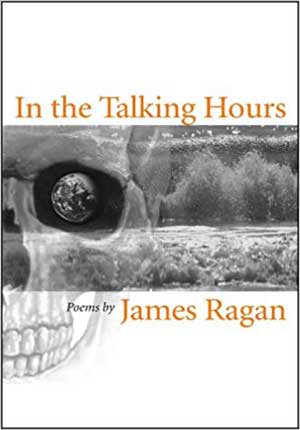
James Ragan, In the Talking Hours, 3rd edition, University of Southern California Figueroa Press, 2004.
Musician and choreographer began to discuss the mechanism by which one art form could render the meaning of another. Ma wondered if the music’s “fight between scales and arpeggios” might somehow inform the dance. Morris responded that he was open to such interpretations but must still decide whether “the actual representation of black dots on white paper done as dancing” will work. Very much in question was the authority of the score. “It’s like deciding which rules one wants to follow,” said Morris. “I feel compelled to follow the rules of Bach in making up a piece to Bach, whereas you don’t have to. You can also have a legitimate dance where Bach has nothing to do with it even though it’s taking place in front of his music.”
The experiences of these choreographers and musicians suggest the conflicts that can arise despite the best of intentions by artists seeking common platform for disparate forms. The first question is one of status: Will one art form predominate over the other? One is reminded of the music of Tchaikovsky, so robust in the composer’s pure symphonies yet so subdued in his ballet accompaniments where instrument defers to dancer. Cage and Cunningham attempted to maintain the dominance of their respective arts by working their constructive materials along parallel tracks, even as Ma and Morris, engaged in a dialog to draw the essence of one art form into another, betrayed a willing abdication of dance to music.
We see the same principles at work in Ragan’s collaborative efforts. Just as Morris’s dance subdued itself to the demands of the music, does not the poetry of drama hide shyly behind the stage scenery? Is this not the price it pays for what theater gives? And that gift can be substantial: We earlier noted Eliot’s assertion that the stage—we extend his insight to film—cuts across the stratifications of the public taste. It does so, he believed, by providing multiple levels of significance, each of which appeals to an audience at a certain degree of sophistication. The first level is plot, for those seeking the satisfaction of a good story. The second is character and conflict, for the more reflective. The third is words and phrasing, for those of a literary bent. The fourth is rhythm, for the musically inclined. And we arrive at a final level, appealing to readers and viewers who possess the highest degree of sensitivity to the constructive elements of language. Eliot identified this only as the meaning which reveals itself gradually. Whether a single work of art can really satisfy all those levels—Eliot believed Shakespeare’s plays did so—and whether we should add more to the list, are matters for further conjecture. Meanwhile we affirm two beliefs. One is that lyric poetry can best satisfy Eliot’s first two levels of meaning by taking up residence on the set of stage or film. Another is that to reach the third through fifth level, stage and screen had best appeal to the suggestive power of poetry.
Theater for the sprint; poetry for the marathon. Ragan has said he welcomes an audience’s enjoyment of his public recitations, but he would like everyone to read his poems later in private to reach their deeper universal meanings, crossing time and borders. An immediate engagement with the theatric can sound the echo of that music which Eliot said does not exist apart from the meaning of the words; only a continuing engagement with language can reveal that unnamed meaning which provides for the aesthetic a firm foundation, the symphony in full.
James Ragan, the author of nine books of poetry, has read his work for seven heads of state and for the United Nations, Carnegie Hall, CNN and audiences in China, Japan, India, France, Spain, Brazil, and more. In 1985, he was one of four poets from the West, including Seamus Heaney, Bob Dylan, and Robert Bly, invited to perform for Mikhail Gorbachev at the First International Poetry Festival in Moscow. Published in 15 languages and 25 anthologies, Ragan has been honored with three Fulbright Professorships, two Honorary PhDs, the Emerson Poetry Prize, nine Pushcart Prize nominations, a Poetry Society of America Citation, a London’s International Troubadour Poetry Prize Finalist, an NEA Grant, and the Swan Foundation Humanitarian Award. His plays have been staged in the United States, Moscow, Athens, Beijing, and Prague. He worked as a screenwriter at Paramount Pictures and for 25 years directed the Professional Writing Program at the University of Southern California. For the past 25 summers he has served as Distinguished Professor of Poetry at Charles University in Prague.
Essay by Walter Idlewild.
Posted January 29, 2019.
Works Cited
T.S. Eliot, On Poetry and Poets, (1943). Farrar, Straus and Giroux, 1957.
— Selected Prose. (1933). Farrar, Straus and Giroux, 1975.
Yo-Yo Ma and Mark Morris. Falling Down Stairs. DVD. Sony Classical, 1998.
John Cage and Merce Cunningham. Points in Space. BBC Television. DVD. Kultur, 2007.
James Ragan, The Hunger Wall. Grove Atlantic, New York, NY, 1995.
Unattributed statements by James Ragan were recorded during interviews with Walter Idlewild in August and December 2018.

